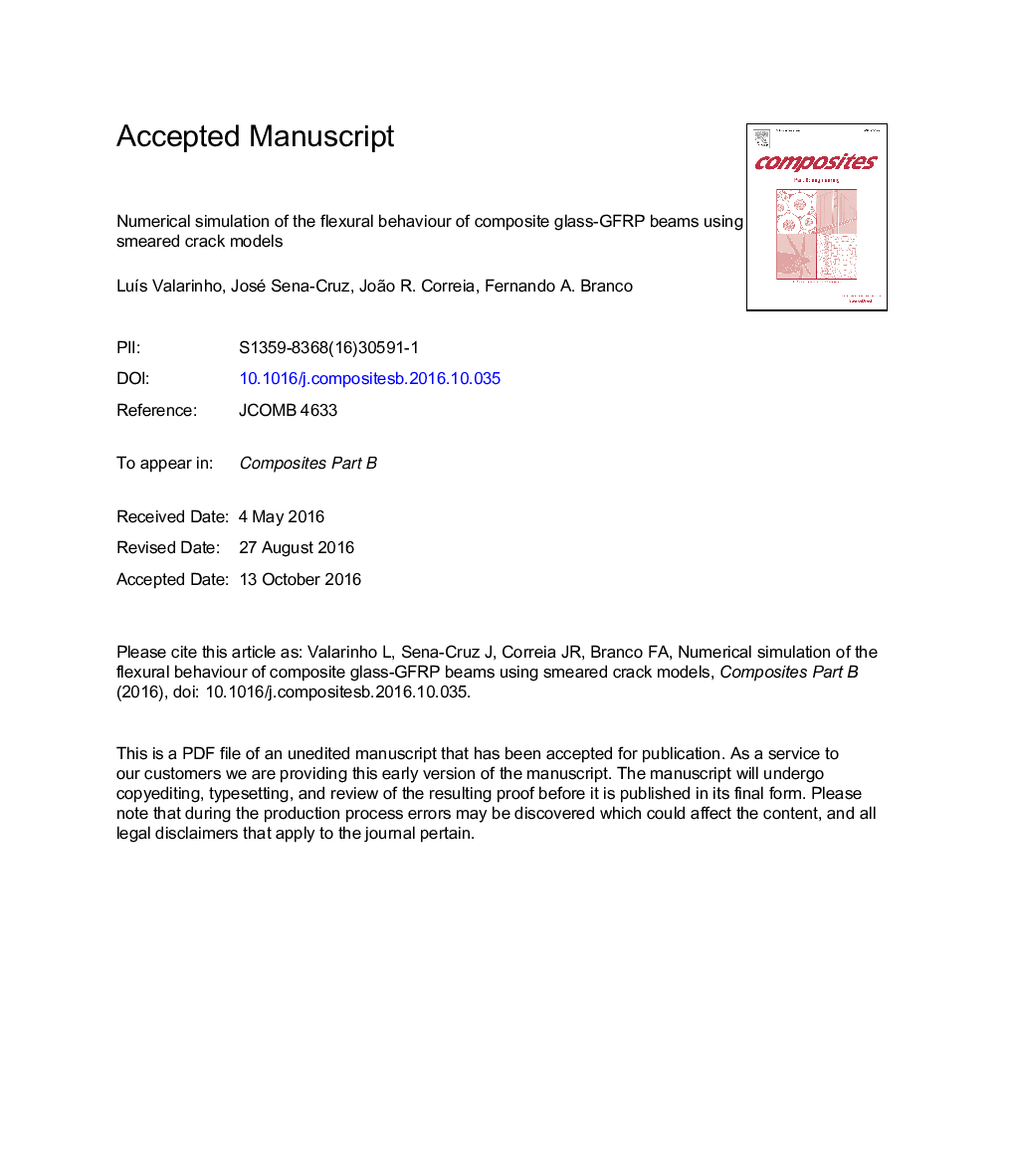| کد مقاله | کد نشریه | سال انتشار | مقاله انگلیسی | نسخه تمام متن |
|---|---|---|---|---|
| 5021858 | 1469375 | 2017 | 61 صفحه PDF | دانلود رایگان |
عنوان انگلیسی مقاله ISI
Numerical simulation of the flexural behaviour of composite glass-GFRP beams using smeared crack models
دانلود مقاله + سفارش ترجمه
دانلود مقاله ISI انگلیسی
رایگان برای ایرانیان
کلمات کلیدی
موضوعات مرتبط
مهندسی و علوم پایه
سایر رشته های مهندسی
مهندسی (عمومی)
پیش نمایش صفحه اول مقاله

چکیده انگلیسی
This paper presents a numerical study about the flexural behaviour of rectangular glass-GFRP composite beams, comprising annealed glass and GFRP pultruded profiles bonded with two different adhesives: (soft) polyurethane and (stiff) epoxy. The main objectives of this study were two-fold: (i) to fully characterize the non-linear behaviour of glass using the smeared crack approach; and (ii) to assess the applicability of different options to simulate adhesively bonded glass-GFRP joints. An extensive parametric study was developed to evaluate the influence of five parameters on the glass post-cracking non-linear behaviour: (i) glass fracture energy, Gf, (ii) crack band width, h, (iii) glass tensile strength, fg,t, (iv) shape of the tension-softening diagram, and (v) shear retention factor, β. The wide range of the joints' shear stiffness was simulated by either (i) assuming a perfect bond between glass and GFRP (i.e. neglecting the presence of the adhesive), or (ii) explicitly considering the adhesive, by means of using (ii.1) plane stress elements, or (ii.2) interface elements. For the beams analysed in this paper, the following material model for glass provided a good agreement with experimental results: Gf in the range of 3-300 N/m, h equal to the square root of the finite element area, fg,t = 50 MPa, linear softening diagram and β according to a quadratic power law. It was also shown that the hypothesis of perfect bond at the GFRP-glass interfaces allows for an accurate simulation of joints with high levels of interaction (epoxy), while calibrated interface elements are needed for joints with low level of interaction (polyurethane).
ناشر
Database: Elsevier - ScienceDirect (ساینس دایرکت)
Journal: Composites Part B: Engineering - Volume 110, 1 February 2017, Pages 336-350
Journal: Composites Part B: Engineering - Volume 110, 1 February 2017, Pages 336-350
نویسندگان
LuÃs Valarinho, José Sena-Cruz, João R. Correia, Fernando A. Branco,